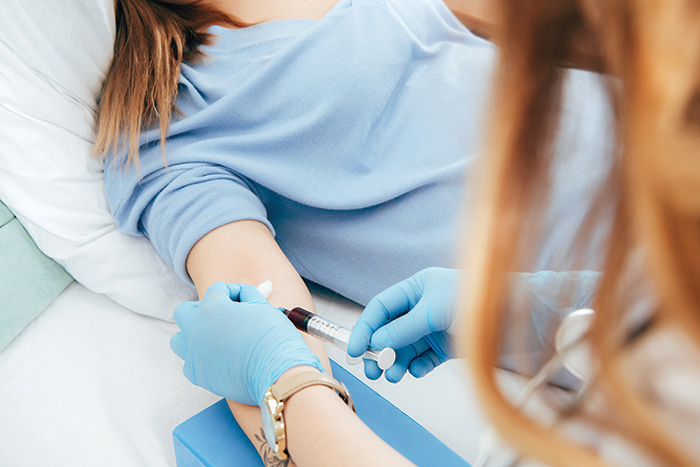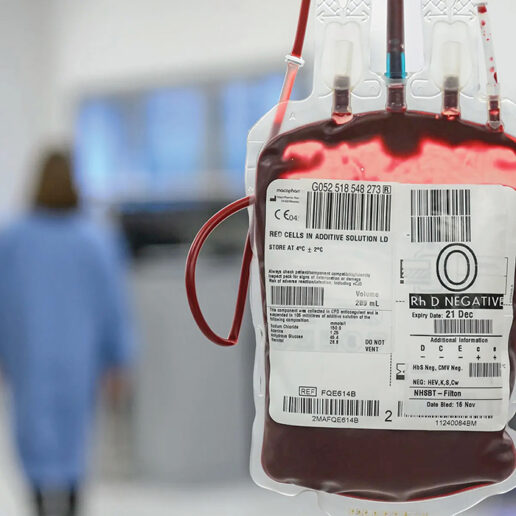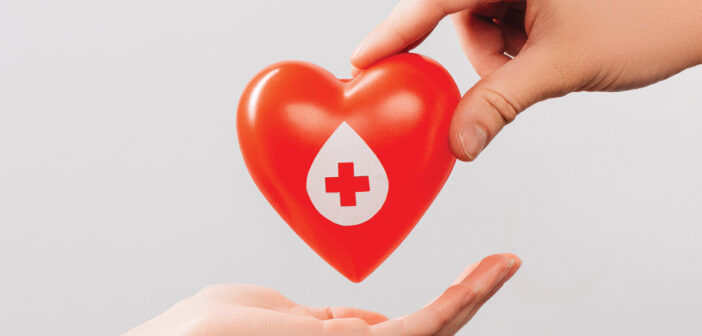Every two seconds, someone in the United States is in dire need of blood or platelets and one donation can save up to three lives. That’s three lives saved for just over an hour of your time. Seems worth it, right?
It’s a new year – and it can be a new you as it is the perfect time to step outside your comfort zone and do something that will save lives: give blood. Is there a better way to start 2023 than by being a hero?
Donated blood benefits so much more than accident victims or victims of violent trauma. Your unit of blood can help cancer patients, burn victims, Sickle Cell sufferers and those with other chronic diseases. Currently, there is a shortage of blood and every unit counts (accident victims alone can use up to 100 units). Every day, approximately 29,000 units of red blood cells are needed – a tall order indeed. Blood and platelets cannot be made by science and can only come from donation, so it’s up to us to get it done. To set up an appointment to do your part, visit redcrossblood.org.
 How it Works
How it Works
Before they are allowed to give blood, donors must meet requirements. They must be between the ages of 17 and 65, weigh at least 110 lbs., be in good health and feeling well. A whole blood donation can be given every 56 days, up to six times per year. (Health requirements differ depending upon the type of donation.)
After all requirements are met, the next step is to find a blood drive or donation location. In Greater Flint, the Flint Blood Donation Center, located at 1401 S. Grand Traverse in Flint has multiple appointments open for nearly every day of the month. Find the best open hour or two in the entire month and schedule an appointment. Make it a point. It’s important.
While setting your appointment, you will choose which type of donation to make. Will you give whole blood, platelets, plasma, or “power red”?
Whole Blood Donation
The most common and flexible donation, whole blood can be used in its original form or separated into three donations of red blood cells, platelets and plasma. This donation is ideal for all blood types. It takes anywhere from 4-6 weeks to replace the donated red blood cells in the bloodstream.
Power Red Donation
With this type of donation, you give a concentrated dose of red blood cells while retaining your platelets and plasma. The duration of time for the donation is minimally increased but with that extra donation, you can make a difference for trauma patients, newborns and those suffering from sickle cell disease. The ideal blood types for a power red donation are O (+ and -), A- and B-.
Platelet Donation
Platelets are cells in the bloodstream that form clots and stop bleeding. They are needed mainly by cancer patients and others facing life-threatening illness and trauma. A single platelet donation yields the equivalent of five whole blood donations! Platelets are collected at donation centers only and not outside blood drives. This donation can take up to three hours for full unit collection. The ideal blood types for platelet donation are A (+ and -), B+, O+, and AB (+ and -).
 Plasma Donation
Plasma Donation
Plasma is used to treat patients in emergency situations and is extremely important. Because the AB blood type yields plasma that can be safely combined with any blood type, this donation is best for those with AB blood type. The donation can take just over an hour to complete. The ideal blood types for plasma donation are AB (+ and -). It takes just over 24-hrs to replace the plasma donated.
Once your appointment has been set and your donation made, it’s time to sit back and relax. Congratulate yourself on a job well done and start planning your next donation! The more you give, the more lives you can save.
Meeting the demand for blood supply is a struggle and since the beginning of the pandemic, it is needed now more than ever.
Tips for Effective Blood Donation
It’s a simple process with few downsides, but there are a few preparatory things we can do to make it even easier.
→ Drink plenty of water; you don’t want to be dehydrated.
→ Eat well beforehand – you need to keep up your strength. You are giving a part of yourself.
→ Exercise before, not after. If you stick to a strict exercise regimen, make an exception. Do it before or not at all on the donation day.
→ Have an iron supplement ready; some of us may need a little boost.
Visit redcrossblood.org to set up your appointment today and start saving lives, hero!
A Little Bit about Blood Types
With anything medical or scientific, a little knowledge goes a long way. Don’t go in without some understanding of what you are doing and how it works.
Do you know your blood type? Who can you give blood to and vice-versa?
Your blood type is determined by whether or not certain antigens are present. Some antigens can trigger a person’s body to attack the transfused blood if it doesn’t match their own. There are four major blood groups determined by the presence or absence of the antigens A and B. In addition to the A and B antigens, your type is also determined by the presence or absence of a protein called the Rh factor (+ or -). Therefore, the eight most common blood types are A+, A-, B+, B-, AB+, AB-, O+ and O-. The blood type O indicates the absence of both the A and B antigens and more specifically, O- indicates the absence of the antigens and Rh factor.
Due to the absence of both antigens and Rh factor, those with O- blood type are known as “universal” donors. O- blood can be successfully mixed with all blood types and being the rarest blood type, it is constantly in short supply. The most common blood type is O+ and this type can be donated to a person with any Rh positive blood type – namely A+, B+ and AB+.
The A blood type can only be donated to those with the A antigen present (A and AB) and the same rule goes for blood type B (B and AB). Rh factor is still important as only Rh positive blood can be given to those who are Rh positive (A+ to AB+); however, blood without the Rh factor will be compatible with both B- to AB+.
Type AB, on the other hand, is the most restricted type in terms of compatibility. AB- can only be given to AB- and AB+. AB+ only works with AB+. A person with type AB, however, is the universal donor for plasma. (Just goes to show you that no matter your blood type, donating is important!)
All this may seem a little confusing – let’s make it easier and look at one more example. Say an accident victim is rushed into the ER with an unknown blood type. If they need blood immediately, doctors will quickly administer O- blood as they can be sure it will not adversely affect the patient. (This is why O- blood is in such high demand.) Later, after the patient is stabilized, medical staff may determine that the patient’s type is B+. This means that medical staff can continue to administer blood as long as it is O-, O+, B- or B+. If they use any blood type with the A antigen (A or AB), the patient’s body will fight back. With an adequate supply of blood on hand, this patient will be fine and hopefully recover.
Meeting the demand for blood supply, however, is a struggle and since the beginning of the pandemic, it is needed now more than ever.
The world needs its heroes and even though nobody can fly through the air or leap buildings in a single bound, we can all still become one. All it takes is the drive to do good in the world, the courage to show up, and the sacrifice of an hour’s time to donate.
Will you answer the call?








